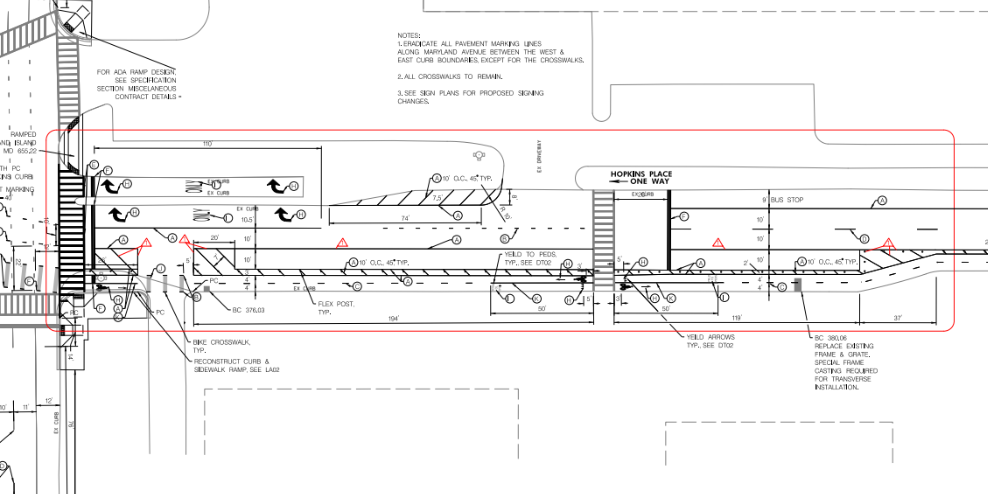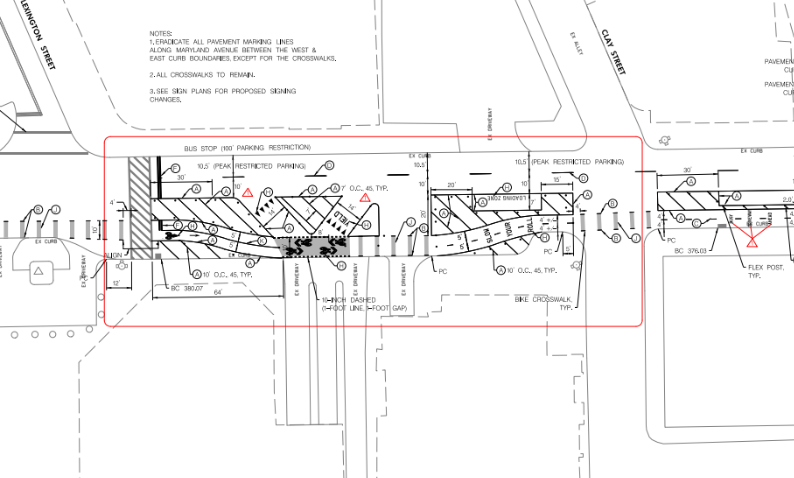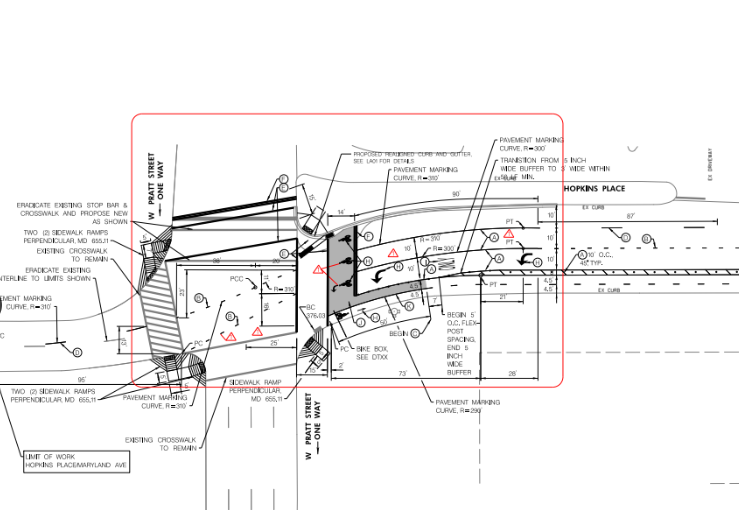Downtown Bike Network Construction Timeline (courtesy of BCDOT)
The Downtown Bike Network resumes construction this week. For full details, please visit Baltimore City Department of Transportation’s Downtown Bike Network page.
Background
The Downtown Bike Network was originally slated to be completed over a year ago. Construction was halted during the Potomac Street fire access discussion, and the Baltimore City Fire Department required a full re-design of the Downtown Bike Network before construction could resume.
We believe a re-design to comply with arbitrary fire clearance standards was unnecessary, and successfully fought to overturn that piece of fire code to prevent those standards from affecting projects again.
However, this fight occurred alongside the construction halt on Downtown Bike Network. So we worked with Baltimore City Department of Transportation on a re-design that improved significant portions of the design while also maintaining the at-the-time required fire clearance.
New Design Monument/Centre (the good)
The new design creates a fully-separated, two-way bike lane along Centre and Monument Streets from MLK/Eutaw to Washington Street. This will allow direct connections to future separated lanes on Wolfe or Washington Streets to the East, and to the future MLK sidepath and Eutaw Place separated lane.
The design replaces the original protected lane on Madison Street east of Guilford Avenue, replacing it with the two-way facility on Monument.
New Design Madison (not so good/opportunity to improve)
West of Guilford Avenue, Madison Street is planned to have a combination of separated lanes and buffered lanes, the latter being a requirement in portions due to the fire code. This section has been strongly opposed by the Director of Baltimore School for the Arts, and as a result, implementation has been delayed until Summer 2019.
Madison Street needs a re-design that calms traffic along the corridor. It is dangerous and contributes to economic decline of the corridor.
This delay in implementation is both a disappointment and an opportunity. The fire code update will go into effect in the end of October, which gives us the winter to discuss a better design for Madison Avenue that will meet the needs of people biking, the community desire for real traffic calming, and Dr. Ford’s concerns at Baltimore School for the Arts.
However, the delay until Summer 2019 may mean the grant will expire, causing us to lose the money to construct any design on Madison Street. This would be an unacceptable outcome. BCDOT must work to ensure any delay does not end with an expired grant, and must accept that some stakeholders may never accept infrastructure changes, even when they address critical street safety issues.
Changes on Maryland/Cathedral
Certain portions of the Maryland Avenue cycle track contain construction errors in the original design, including at the Pratt Street intersection. Other portions are regular conflict points, like at Centre Street and at the Lexington Street parking garage. Resuming construction of the Downtown Bike Network will allow us to fix these sections with correct and/or improved designs that will make the Maryland Avenue cycle track safer for all users.
Overall
The Downtown Bike Network will create a critical cross town connection that can be expanded upon into East and West Baltimore over the next 2-3 years. We’re thankful that BCDOT is taking a bold step in creating another high quality connection, and that they used this delay to think creatively and improve designs.
We will advocate to use the winter to improve the Madison Street design for a spring implementation that does not risk grant expiration.








